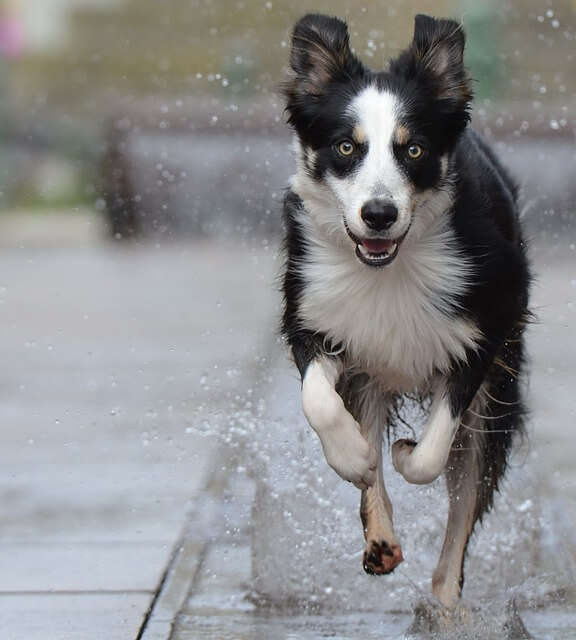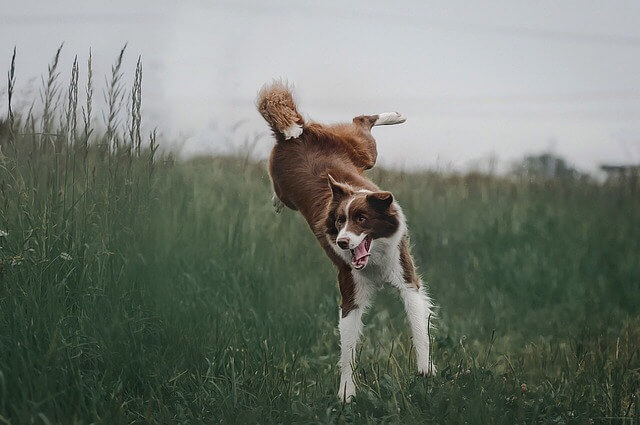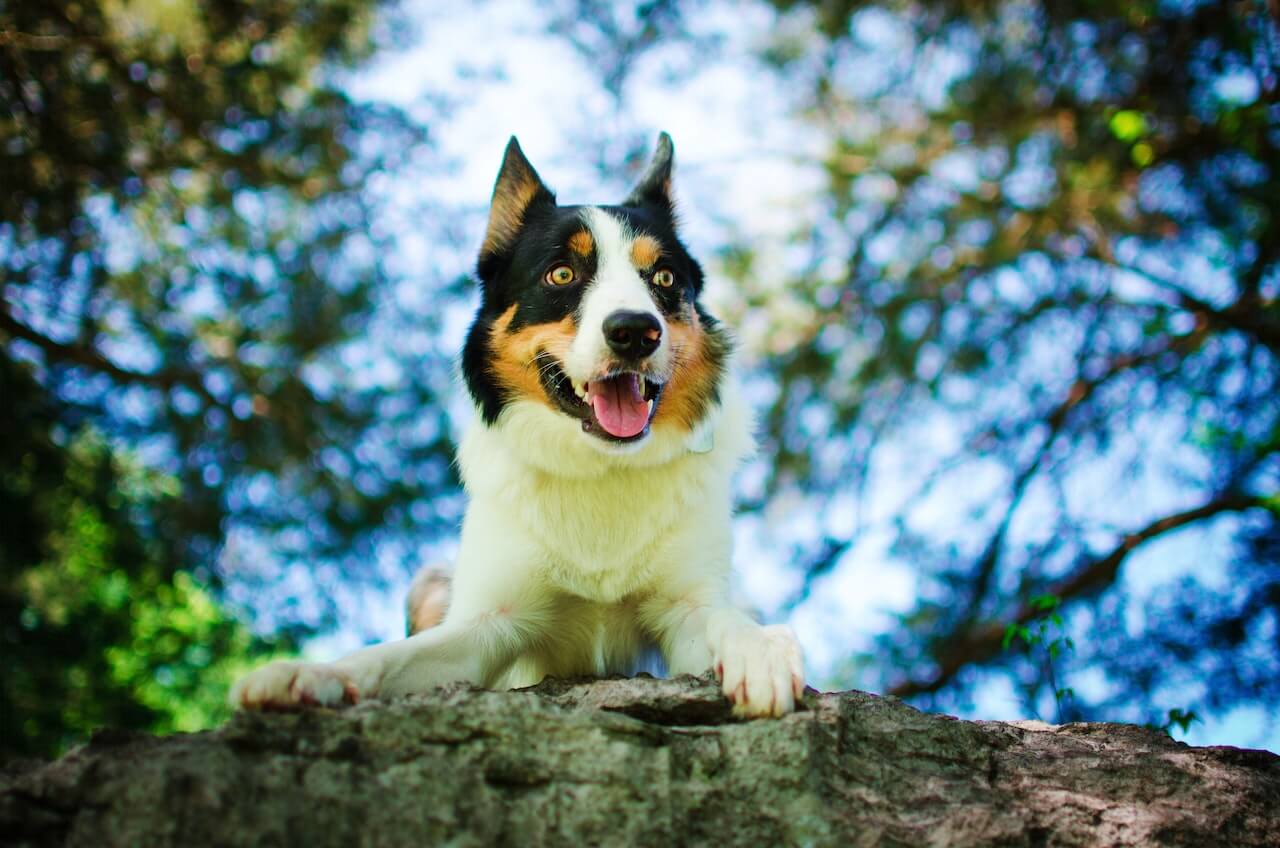Have you ever taken a moment to look at your dog’s feet and wonder about their unique structure? If you’re a dog enthusiast, you might have heard about certain breeds having webbed feet. But the question that often pops up is, “Do Border Collies have webbed feet?” Dive into this article to uncover the fascinating world of canine feet, from the aquatic adaptations of some breeds to the specific characteristics of the beloved Border Collie. We’ll also delve into the advantages and disadvantages of webbed feet in our furry friends and provide some essential care tips for those paw-some Border Collies feet. Let’s embark on this foot-tastic journey together!
What are Webbed Feet in Dogs?
Webbed feet in dogs refer to the presence of a membrane or skin that connects the toes. This “webbing” is similar to what you’d observe in aquatic animals like ducks or frogs, but it’s not always as pronounced in dogs.
Characteristics and Purpose:
- Structure: Webbed feet consist of a thin layer of skin or membrane that stretches between the toes, connecting them. This webbing can vary in extent among different dog breeds.
- Function: The primary function of webbed feet in dogs is to aid in swimming. The webbing increases the surface area of the foot, allowing for better propulsion in the water, effectively turning their feet into paddles.
- Evolutionary Advantage: Over time, certain breeds developed more pronounced webbing due to the tasks they were bred for. For instance, breeds involved in water retrieval or hunting in marshy areas benefited from having webbed feet as it made them more efficient swimmers.
- Beyond Swimming: While the primary advantage of webbed feet is improved swimming capability, they can also benefit breeds that are natural diggers. The webbing provides additional support when moving soil. Additionally, webbed feet can offer better stability on various terrains for some breeds.
Breeds with Pronounced Webbing: Some dog breeds are known for having more pronounced webbed feet due to their historical roles. Examples include:
- Labrador Retriever
- Newfoundland
- Chesapeake Bay Retriever
- Portuguese Water Dog
webbed feet in dogs are a natural adaptation that enhances their ability to swim and navigate certain terrains. While all dogs have some degree of webbing between their toes, it’s more noticeable and functional in breeds historically associated with water activities or specific terrains.
Advantages And Disadvantages Of Webbed Feet in Canines
Advantages of Webbed Feet:
- Swimming: The webbing on a dog’s feet can be used to help them swim because it turns a dog’s feet into mini-paddles that aid them in moving through water. The more webbing a dog has on its foot, the better a swimmer it will be.
- Digging: Webbed feet can also be useful to dogs that are diggers. The webbing can help with digging.
- Stability: Webbing on feet helps provide stability for breeds that are active and move around a lot by increasing the surface area and sturdiness of the foot. For Border Collies, this means they can easily make their way over hunting trails, stay stable as they run and play, and dig when they go into digging mode.
Disadvantages of Webbed Feet:
- Parasites: The webbing on a dog’s feet can be a hiding place for parasites like fleas or ticks. If you have a Border Collie, you’ll need to check often to ensure the webbing is clean and free of these parasites.
- Abscesses: Abscesses can easily occur in the webbing. These blisters show up when the little bristly hairs on the webbing get pushed back into the hair follicle, resulting in infection. Abscesses can be quite painful for your pup.
- Foreign Objects: Foreign objects can get lodged in the toe webbing on your pet’s feet. These could be snow and ice, tiny shards of glass, small stones, etc., which can cause pain and inflammation in the paws. It’s essential to check your Border Collie’s feet after long walks, and if you find something stuck in your dog’s webbing, tweezers (or a visit to the vet) may be needed to remove it.

Do Border Collies Have Webbed Feet? Anatomy of Feet
Border Collies, have a slight webbing between their toes, but it’s not as pronounced as in breeds specifically adapted for water activities, such as the Labrador Retriever or the Newfoundland. This slight webbing can help them move more efficiently over different terrains, but it’s not designed for swimming or water activities.
Anatomy of Border Collie Feet:
- Toes: Border Collies typically have four toes on each foot, with each toe having its own claw. They also have a dewclaw, which is a fifth, higher-placed “toe” on the inner part of their front legs, and sometimes on their hind legs too.
- Pads: The pads on a Border Collie’s feet are thick and act as shock absorbers. They provide cushioning and protection when the dog is running or walking.
- Webbing: As mentioned, there’s a slight webbing between the toes. This can help in providing a bit more surface area, aiding in traction and movement.
- Nails: Border Collies have strong nails that can grow quickly. Regular trimming is essential to prevent overgrowth and potential injury.
- Fur: The fur between the pads and toes can be dense. In snowy or muddy conditions, it’s a good idea to check and clean their feet to prevent ice, snow, or debris buildup.
If you’re considering activities like swimming with your Border Collie, it’s essential to introduce them to water gradually and ensure their safety, as their feet aren’t specifically adapted for extended water activities.
Some Tips To Take Care Of Border Collie’s Feet
Taking care of your Border Collie’s feet is essential for their overall health and comfort. Here are some care tips for Border Collie’s feet:
1. Trimming:
- Nails: Keep your Border Collie’s nails trimmed. If you hear them clicking on the floor or they get snagged easily, it’s time for a trim. Dog nails should barely touch the ground. If you’re unsure about trimming them yourself, consider seeking a professional groomer or vet’s assistance.
- Hair Between Toes: The hair between the pads can cause painful matting if not trimmed regularly. Comb the hair out and trim it so it’s even with the pads. While trimming, also check for pebbles, splinters, or other debris.
2. Inspect Paw Pads:
- Moisturize: If the paw pads are dry, they can crack and bleed. Use a dog-specific moisturizer to prevent this. Avoid human lotions as they might soften the pads too much.
- Check for Swelling: Swollen paw pads can be a sign of injury, insect bites, allergies, or infections. If you notice any swelling, consult your vet.
3. Summertime Care:
- Avoid Hot Surfaces: Dogs’ paws can burn on hot surfaces like asphalt or sand. During summer, try to walk your Border Collie during cooler parts of the day and avoid hot surfaces.
- Watch Out for Trash: During summer outings, be cautious of trash or sharp objects that could injure your dog’s paws.
4. Wintertime Care:
- Protect from Cold: Excessive exposure to cold can dry out the paw pads, leading to chapping and cracking. Use a dog paw moisturizer to soothe winter-worn feet.
- Beware of Winter Chemicals: Many people use salt or de-icers to melt ice off sidewalks, which can be harmful to dogs. After walks, wipe down or rinse your Border Collie’s paws to remove any chemicals.
5. Address Cuts and Scrapes:
- First Aid: If your Border Collies gets a minor injury on its paw, clean it with an antibacterial wash, apply an antibacterial cream, and bandage the paw if necessary.
- Paw Chewing: If your Border Collies constantly chews its paws, it could be due to anxiety, allergies, or skin conditions. Consult your vet for guidance.
Bonus Tip: If you notice hair-like protrusions coming from the paw pad (not the normal hair between toes or pads), it might be a condition called hyperkeratosis. Consider using a paw pad balm specifically made for this condition.
Regularly inspecting and caring for your Border Collie’s feet will ensure they remain healthy and free from discomfort. Remember, their paws are their connection to the world, so it’s essential to keep them in top shape!

Do Border Collies Have Webbed Feet? FAQ’S
Q. Why do Border Collies have some webbing between their toes?
A. While the exact reason is not definitively known, the presence of minimal webbing might aid in their agility and grip, especially when herding on varied terrains.
Q. Are there other dog breeds with more prominent webbing?
A. Yes, some breeds like the Labrador Retriever and the Newfoundland have more pronounced webbed feet, which aid them in swimming.
Q. Can Border Collies swim?
A. Yes, Border Collies can swim, and some might even enjoy it. However, they are not naturally water dogs like some other breeds.
Q. Does the webbing mean Border Collies are good swimmers?
A. Not necessarily. While the webbing might provide some advantage, Border Collies are not bred for swimming. Their primary role is herding.
Q. How does the webbing in Border Collies compare to other breeds?
A. Border Collies have less prominent webbing compared to breeds known for their swimming abilities.
Q. Is the webbing in Border Collies an evolutionary trait?
A. It’s possible. Many canids have some degree of webbing, which could have served various purposes throughout evolution.
Q. Why Do Some Dogs Have Webbed Feet?
A. The presence of webbed feet in certain dog breeds is a result of evolution and selective breeding based on the tasks the dogs were originally bred for.
Key Takeaways
As we wrap up our exploration into the world of canine feet, it’s clear that there’s more to those furry paws than meets the eye. From the intriguing webbing of some breeds to the unique anatomy of our agile Border Collies, every paw tells a story of evolution, purpose, and the bond we share with our four-legged companions. Whether you’re a seasoned dog lover or just starting your journey, understanding and caring for those paws is a step towards a happier, healthier pup. So, the next time you find yourself gazing at those adorable toes, remember the wonders they hold and the adventures they’re ready for. Here’s to many more walks, wags, and wet-nosed kisses!
You May Also Like
Can Beagles Swim? 10 Benefits Of Swimming For Them
20 Reasons Why Dachshunds Are The Worst Breed
